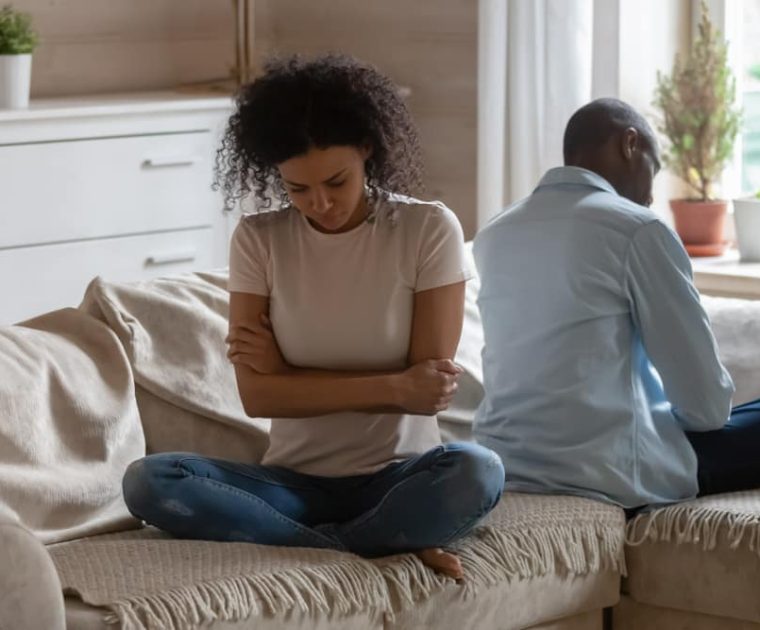Who Wears the Pants in a Relationship Matters – Especially if You’re a Woman

By Laina Bay-Cheng, The Conversation
When it comes to power in romantic relationships, men are often cast as dominant and women as deferential. But working against this are caricatures of domineering women with their “hen-pecked husbands” and “whipped boyfriends.”
At the same time, popular culture is replete with representations of striving and self-serving women – from celebrities like Beyoncé to the TV show “Girls” – who engage in relationships with men as social equals on a level playing field. The idea that during relationship conflicts, women can be just as volatile, combative and aggressive as men – what researchers refer to as “gender symmetry” – is also gaining traction.
But appearances of gender equality can be deceiving.
In my most recent study, I asked 114 young adults about their heterosexual relationship experiences. Unsurprisingly, power was skewed in favor of one partner (versus being equally balanced or shared) in most of their relationships. What’s more, male and female participants were equally likely to see themselves as the ones wearing the proverbial “pants” in a relationship.
But the appearance of symmetry disappeared once we looked at the implications of these power differences. The young men and women may have been equally likely to report imbalances in their relationships and to feel subordinate in their relationships. However, the costs of feeling subordinate were not equal.
Looking below the surface
To learn more about young adults’ sexual experiences – not just simply documenting what they did with whom, but trying to understand how they think and feel about those experiences – I recruited men and women between the ages of 18 and 25 to complete Digital Sexual Life History Calendars (also known as d/SLICE).
d/SLICE is a secure website where participants create a timeline of their sexual and relationship experiences. (There’s a face-to-face interview version, too.) They rate different aspects of the relationships and share details and anecdotes along the way using text, emojis, images and even audio clips.
In the current study, my colleagues and I focused on one portion of the data: how the 114 participants (59 women and 55 men) rated their various heterosexual relationships (395 in all), from one-time hookups to long-term commitments, in terms of stability (how harmonious and even-keeled a relationship was); intimacy (how emotionally close and connected they felt); and the balance of power between them and a partner.
We tested whether the balance of power in a relationship was related to its perceived stability and intimacy. We also explored participants’ descriptions and anecdotes for other clues into the power dynamics in a relationship.
At first glance, gender didn’t seem to matter. Comparable proportions of women and men reported that they had been the dominant or subordinate partner in a relationship. We also found that if people felt like their partners had more power, they tended to think of their relationships as significantly less stable and intimate. On the other hand, if people thought they were in egalitarian relationships – or if they thought they were the ones calling the shots – they viewed their relationship as more stable and intimate.
But when we looked more closely at participants’ experiences, this apparent gender symmetry disappeared.
Looking separately at women and men, we found that it was only women who thought the quality of their relationship changed depending on how much power they held. When they felt subordinate to a male partner, they perceived the relationship as less stable and less intimate.
For men, it didn’t seem to matter whether they had more or less power in a relationship. They felt relationships in which they were dominant were just as stable and intimate as ones in which they were subordinate.
Paying more for having less power
When we turned to participants’ open-ended descriptions of their relationships, we found even more potent evidence of what a difference power can make for young women.
For some young women in our study, power imbalances didn’t just mean a relationship felt less tender or was a little rocky. They were also subject to coercion and abuse. This was true for 12 women who held less power in a relationship (including two who depended on a partner for basic needs like housing) – and even for three who felt like they had more power than their partner.
On the flip side, two men in our study said they had controlling girlfriends, but in neither case did this mean there was physical, sexual or emotional abuse, as it did for the young women. (One wrote that a high school girlfriend didn’t let him see friends and made him feel “self-loathing,” but summed up the relationship as “three miserable years filled with great sex.”)
Why are the stakes of power imbalances lower for men than women?
Relationships don’t happen in a social vacuum. A man may have less power than his girlfriend or wife, but in the world beyond their relationship, he’s cushioned by a still-intact system of male privilege. Men are less likely to worry about the possibility of being assaulted or abused by a female partner. For men, having less power in a relationship is an exception – and usually a benign one – to the rule.
For young women – especially those who are also racially or socioeconomically marginalized – relationships in which they have less power are just yet another domain (on top of workplaces, classrooms and public spaces like streets and subways) in which they need to guard against sexism in all its forms. Endless battling for equality and defending against mistreatment is exhausting. And for women, it does not make for warm, harmonious relationships.
It’s tempting to look only at surface indicators of gender equality and buy in to the fiction that we’ve somehow “solved” sexism (or any other form of bias and oppression). It allows us to feel like we’re in total control of our lives (which has important psychological dividends) and off the hook for worrying about anyone else’s.
But if we look closely and deeply at women’s lived experiences – relationships with men included – enduring gender inequalities and the toll they take become apparent.





Leave a Reply